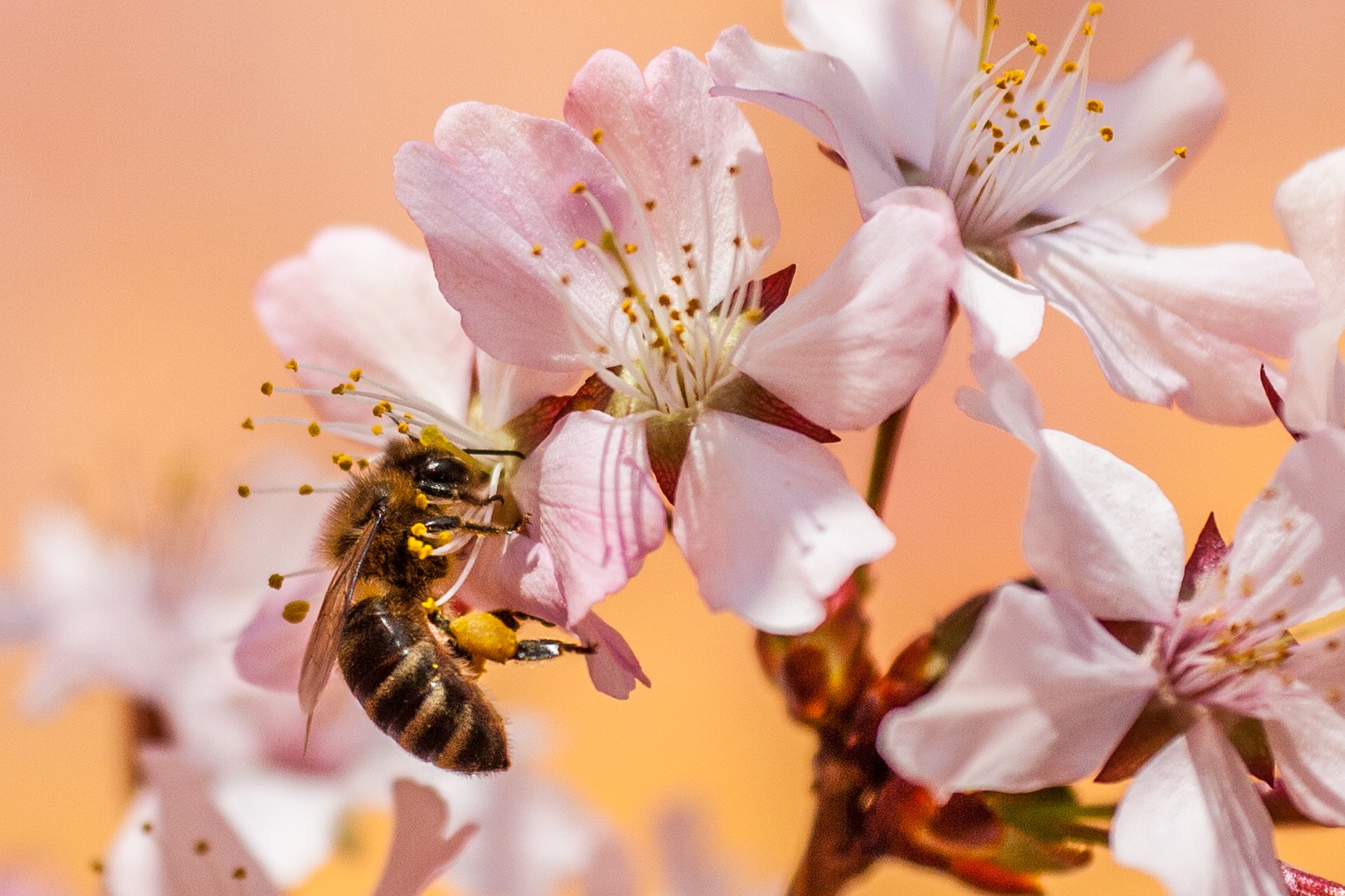Have you ever considered what life would be like without bees? Very few plants will grow in our gardens, and we will most certainly have less food to eat. More than 150 plant species that we use as food, must be pollinated by bees.
Although bees are not the only pollinators, they are crucial for pollination. Bees spend most of their lives to collect pollen grains that stick to the stiff hairs on their legs, which allows them to carry it to their hive to feed their larvae, or baby bees.
While at the flower, they also collect nectar, a sweet watery substance that the flower produces, which provides the bees with energy and which they turn into honey once they are back in the hive.
Pollination
While visiting flowers of the same species, they transfer pollen from male flowers to the female flowers, thereby enabling fertilisation in plant ovaries, which leads to the production of seeds. And seeds, as we know, produce fruit, vegetables, nuts, and grains.
Therefore, bees play an important part in every aspect of the ecosystem. They support the growth of all plants, which provide food and shelter for all of God’s creation.
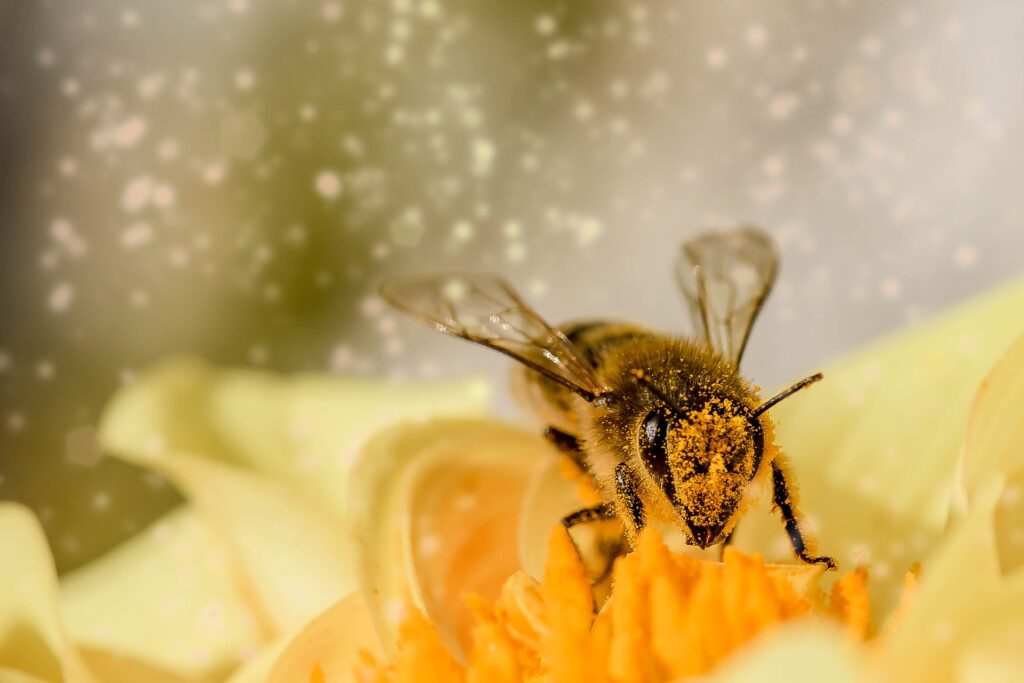
Inside the hive
A happy and functional hive must have a queen bee, who lays thousands of eggs in her lifetime. During her maiden flight, she mates with drones, or male bees, who have the sole purpose of mating with a queen. They don’t have much other purpose, and when they reach the end of their short lives, they are literally thrown out of the hive by the worker bees.
The worker bees are all female, and boy, do they work themselves to a standstill – literally, because in the end their little wings are torn and tattered, and then they die. During their lifespan, they fly hundreds of kilometres, visit thousands of flowers, and collect kilograms of pollen.
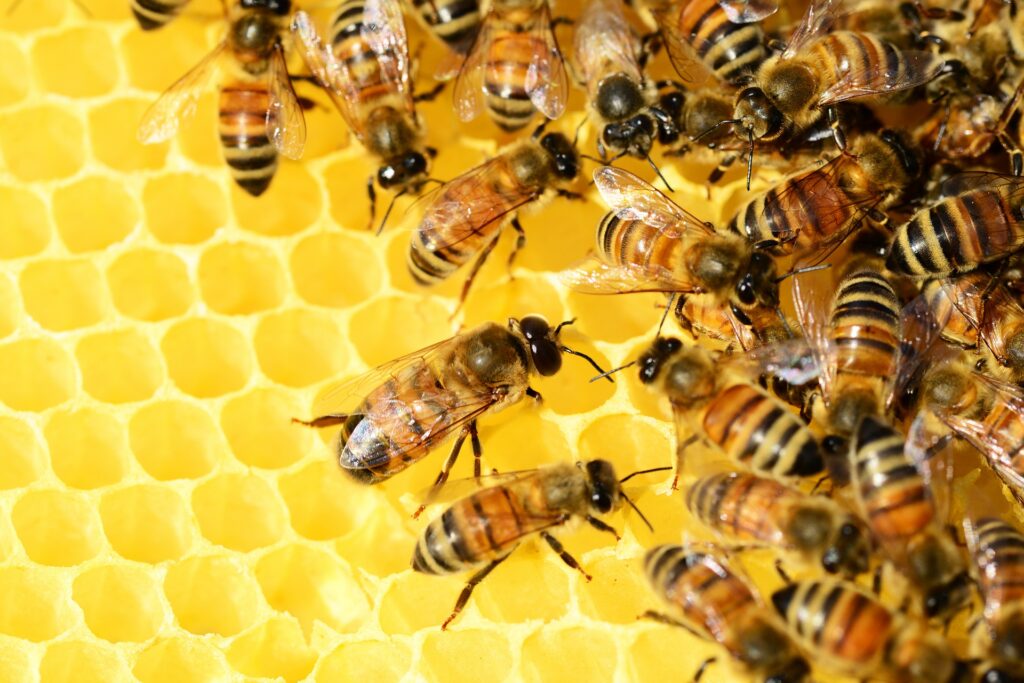
Bees on the hexagonal cells of a comb. (Source: Pixabay)
While collecting pollen, they also collect tree gum, which they turn into propolis, which has healing properties. They also produce perfectly hexagonal wax cells, into which they lead the queen bee to lay eggs. Best of all, they produce honey by dehydrating moisture from the nectar. They store this honey for the survival of the hive during lean times, like winter, when there is little food available.
Forage
When they have an abundance of forage in the form of flowering plants, trees, and crops, as well as fresh, clean water, they produce lots of honey, and if they are calmed using smoke and gentle procedures, they sort of allow humans to collect some of the honey.
Harmful practices
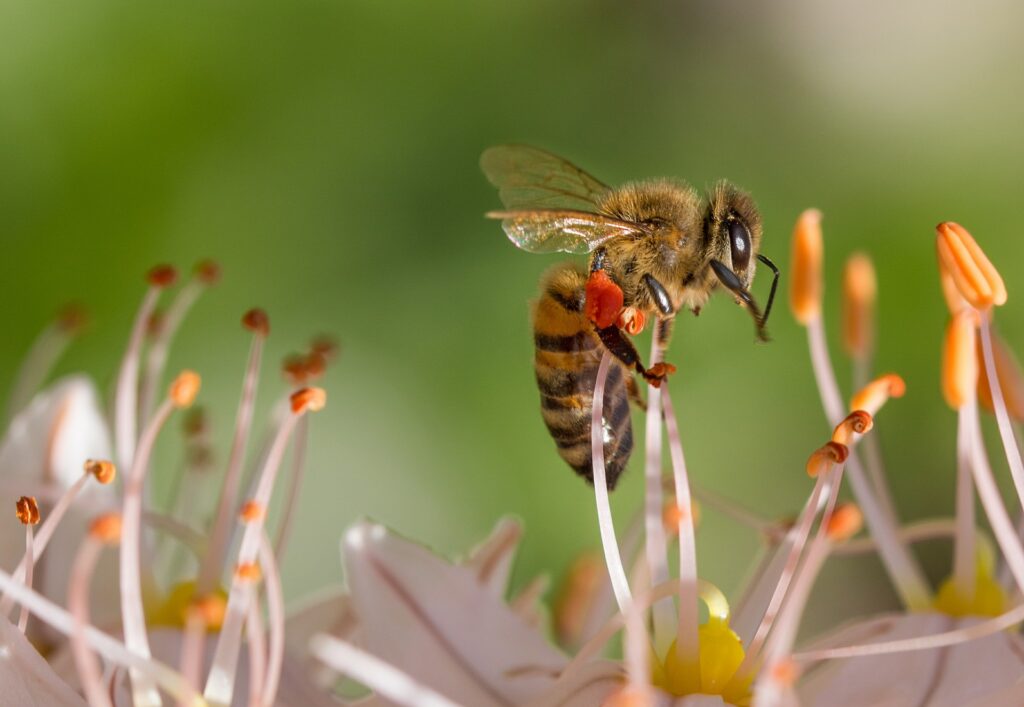
A bee on the anthers of a flower. (Source: Pixabay)
It is our responsibility to treat bees kindly by taking care of them. In nature, where they are undisturbed by human intrusion, they are fine, but the
actions of humans disrupt nature. How do we do it?
- Extensive agriculture with mono-culture crops, take away the bees’ natural habitat and the plants they rely on.
- We pollute the air by blasting our crops with pesticides so that we can gain a bigger yield per hectare.
- Our farming methods destroy the soil where CO2 is supposed the be stored, so that it is instead being released into the atmosphere, causing climate change.
- Climate change causes erratic weather patterns, such as severe floods that kill people and animals and destroy livelihoods. It also causes devastating droughts that equally put man in a quandary because it jeopardises food security. Droughts are often followed by fire, as we often experience in Southern Africa.
- As a result, the bees are left without a home or food, and because they are weak, they get sick more easily, and they die. And where will that leave us?
- By caring for the bees, we can help them and ourselves to survive. But for this, we need human beings who understand the value of the bees and the abundance they provide for us in the form of healthy plants and the sweet reward of honey.
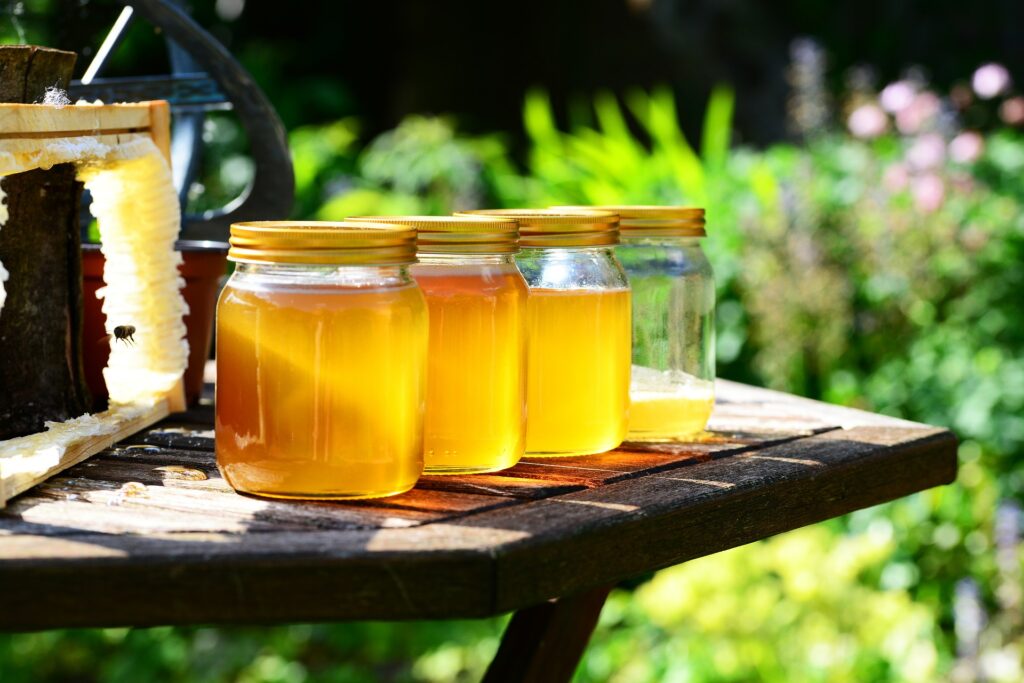
Golden honey in jars, ready for the marketplace. (Source: Pixabay)
Women as beekeepers
Women who cultivate small-scale farms in Africa produce more than 70% of the food consumed on the continent. These women are perfectly suited to take care of a hive of honey bees along with their other tasks of taking care of the fields, the household, her children, and her elderly family members. It will take patience, thoughtfulness, and hard work, but beekeeping will make their gardens grow because she will be taking care of these industrious little pollinators.
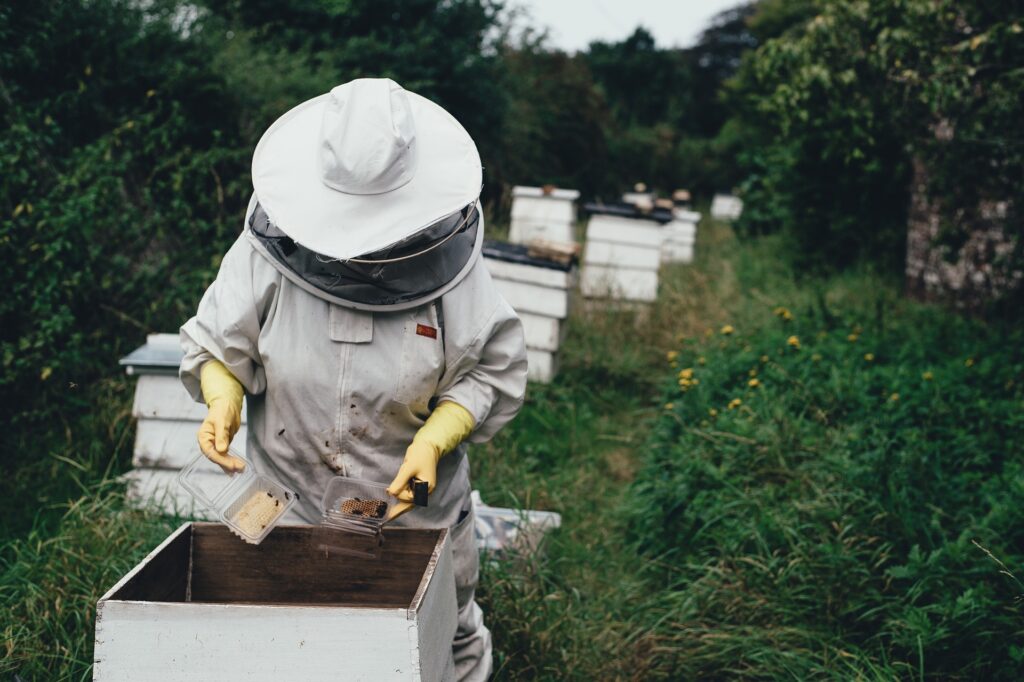
A woman in protective clothing working on a hive. (Source: Pixabay)
An industrious woman will be able to feed her children nutritious honey, which can also be used as medicine to help cure a child’s cough. She can create an extra income by selling jars of honey from
her home or at the marketplace, and she can sell candles made from beeswax.
All she needs is a constant source of forage. With climate change and the change of the natural landscape into villages, towns and cities, forage is becoming increasingly scarce. But if there is a grove of trees, especially fruit trees like mangoes, indigenous plants, and a field of maize or cotton, there will be pollen and nectar for the bees, and honey for the household.
Setting up a hive
There are also other considerations when you want to start keeping bees. Besides a swarm of bees, you will need a hive, special equipment, and protective clothing. If you do not own land with enough suitable forage, you may have to ask permission from a landowner or farmer if you need to put your hive near his flowering fields.
You also need an area in your yard where you can put the hive in a sunny spot that is protected from strong winds. It must be placed some distance from livestock and poultry to prevent your animals and family members from being stung by disturbed and angry bees.
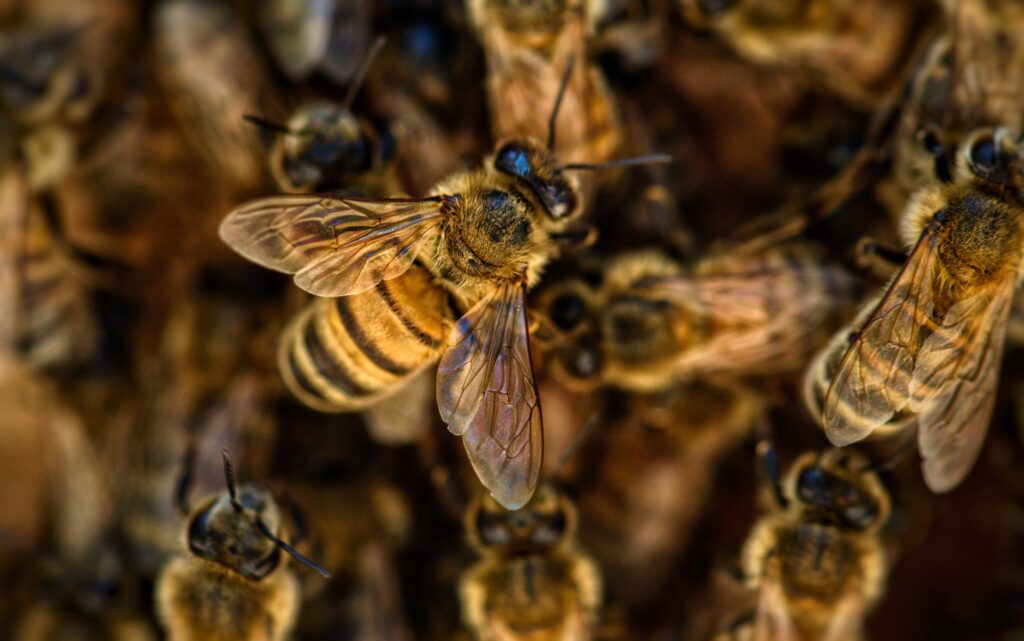
Worker bees buzzing inside the hive. (Source: Pixabay)
Hives must be put on a stand above the ground to prevent it from getting wet and to keep ants and hungry honey badgers away. Somehow, you will also have to protect your hive from people who want to steal your honey – or even your hive!
You must regularly inspect your hive to make sure your bees are well and performing at their best. Doing so, you will notice when something is wrong, as there are several diseases that can cause the whole swarm to die. In winter, you may also have to provide extra feed to help them survive a lean time.
But it will be all worth your while. The bees will not only provide you with honey, but also an abundance of healthy fruit, vegetables, maize, and nuts.
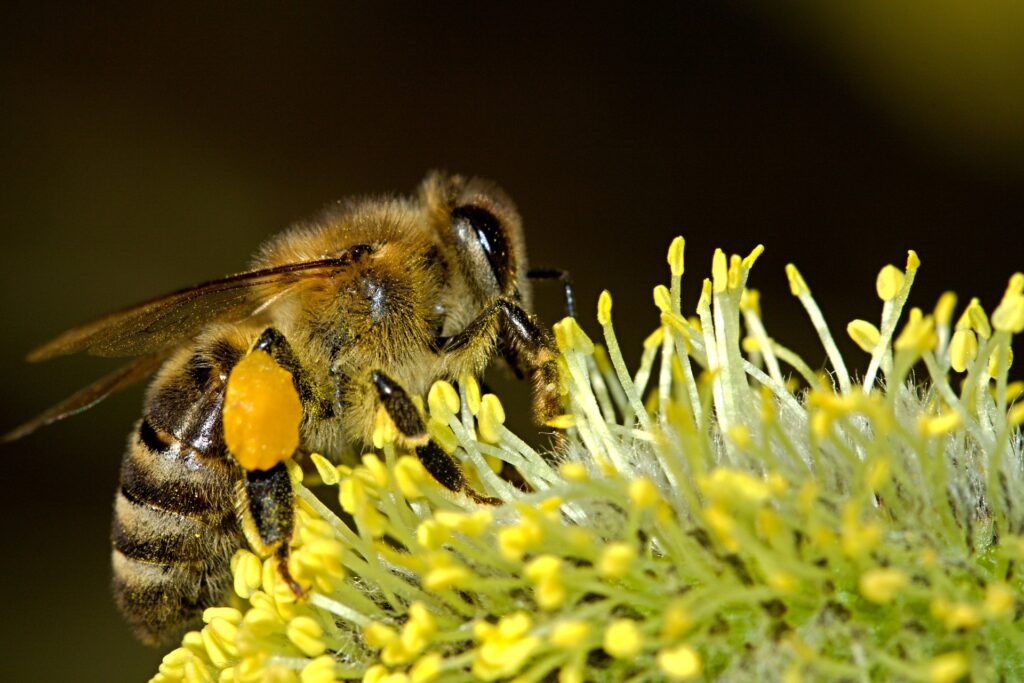
Bees collect pollen that sticks to their hairy faces and legs. (Source: Pixabay)
In the next few articles, we shall give more information on pollination, the interesting life of bees within a hive, the challenges facing a beekeeper, how to set up a hive, how to identify diseases and how to manage the hive to keep bees healthy and happy.
References
Agribook Digital. (n.d.). Beekeeping. [online] Available at: https://agribook.co.za/livestock/beekeeping/
Mayes, D. (July 2011) Pollinators in Africa: Understanding is the first step to protection. South African National Biodiversity Institute (SANBI). https://www.sanbi.org/wp-content/uploads/2018/03/pollinafricabookletweb.pdf
Native Plants and Ecosystem Services. (2007). Pollination. [online] Available at: https://www.canr.msu.edu/nativeplants/pollination/.
Practical Beekeeping. (n.d.). Practical Beekeeping Book – Start Beekeeping. [online] Available at: http://practicalbeekeeping.com/
Western Cape Government. (n.d.). Protecting bees in the Western Cape. [online] Available at: https://www.westerncape.gov.za/generalpublication/protecting-bees-western-cape
Final Strategy Report. (2017). [online] Available at: https://www.elsenburg.com/bee
Thomas, E. (2021). Breakdown: Why bees are important to the environment. [online] https://www.actionnews5.com. Available at: https://www.actionnews5.com/2021/05/19/breakdown-whybees-are-important-environment/.

